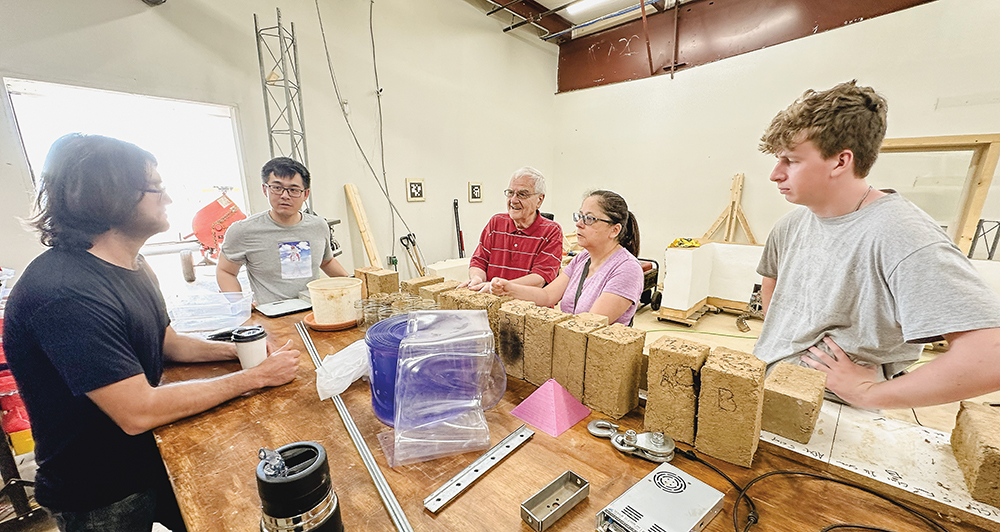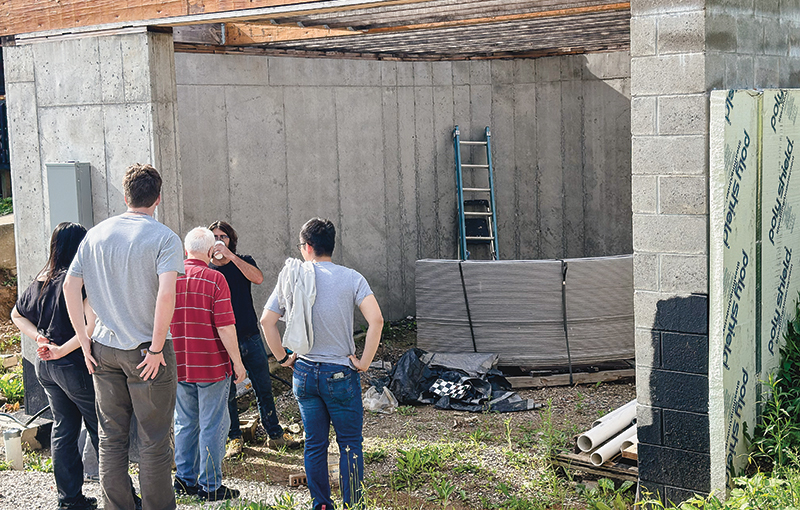Building the Future

Purdue researchers collaborate with Terran Robotics to evaluate clay-based bricks tested at Purdue.
Coupling AI and 3D printing for sustainable, affordable and environmentally friendly homes
Through research at Purdue University, 3D printed homes are swiftly becoming a reality.
“There have been great advances in 3D printing technology over the years — and we expect improvements will keep coming for some time,” said Pablo Zavattieri, the Jerry M. and Lynda T. Engelhardt Professor in Civil Engineering. “What we need to do now is to find the right materials to 3D print sustainable and affordable structures without negatively impacting the environment.”
Leading the research effort at Purdue to perfect functional, life-size, 3D-printed buildings are Zavattieri; Jan Olek, the James H. and Carol H. Cure Professor in Civil Engineering; Marika Santagata, professor of civil and construction engineering; and Jeffrey Youngblood, professor of materials engineering.
Partnering with Purdue in this research is Terran Robotics, a company that specializes in constructing affordable, sustainable homes by leveraging artificial intelligence and robotics. Their approach utilizes natural materials to create high-quality, environmentally friendly homes, addressing the housing crisis by improving construction efficiency with AI-driven technology.
The material currently being tested by Purdue researchers is known as cob — a mix of clay, sand, water and straw. It is a low-carbon building material that has shown to test well for compression strength and durability while incurring lower carbon emissions during its manufacturing than concrete.

Purdue researchers and Terran Robotics partners visit Bloomington, Indiana, showcasing natural material homes and 3D printed walls for ponds.
“Currently, we’re testing various mixtures to find the strongest set of materials,” said PhD student researcher Yu Wang. “Our focus right now is to find the ideal mixture and moisture content to make the strongest, most resilient material possible.”
Assisting in the research were undergraduate students Ilene Trach and Case Vandevelde. Trach said she developed an interest and wanted to join the research team after taking a new course, 3D Printing for Infrastructure Applications.
“When I saw the potential applications for 3D printing in the future, I wanted to learn and experience even more,” Trach said. “Getting the opportunity to record data and participate in research like this was a valuable experience.”
Trach and Vandevelde joined the Purdue research team through the university’s Summer Undergraduate Research Fellowships (SURF) — an 11-week summer program that includes team research experience, professional development seminars, the presentation of research discoveries at the SURF symposium and social activities with other members.
“The SURF program has been an indispensable resource for us to find engaged students who want to further their studies and experience,” Zavattieri said. “It is impactful for the students and helps further our research.” As for the next step in the research, Zavattieri said that they will continue to test and refine materials and aim to print a full-sized structure in the near future.
